We dig into the world of archaeology this week to uncover what DNA is revealing about how humans domesticated plants and livestock. We also delve into the story of stonehenge and hear how scientists are using new isotope techniques to find out how it was built and what when on there. We also trace the history of the civilisation that carved the Nazca lines in South America and then disappeared without trace, but why? Plus, we hear about a new way to combat allergies with a course of injections, how music could improve your health, and how fish elect their leaders. And in kitchen science we show you how to make you own desktop seige weapon!
In this episode

01:05 - Better way to battle allergy
Better way to battle allergy
With asthma and allergy cases amongst young people at an all time high, a study from scientists in Switzerland offers a breath of fresh air...
Gabriela Senti and her colleagues at University Hospital Zurich, writing in this week's PNAS, have found that injections designed to desensitise people with allergies can work much more powerfully if they are administered into a lymph node rather than under the skin.
Traditionally doctors have attempted to damp down overzealous immune responses in people with allergies by injecting weak doses of the offending allergen into the skin. The idea of this therapy is to provoke immune tolerance towards the foreign material by pursuading the immune system to regard it as a friend rather than a foe.
Unfortunately, this approach has mixed results and can be dangerous because it may trigger severe anaphylactic reactions. Consequently, people with the most severe allergies, who have the most to gain from desensitisation treatments, are often unable to be treated in this way. But this approach is probably flawed because the skin is heavily primed to react to allergen exposure, rather than developing tolerance.
Instead, the Swiss team reasoned, allergens would probably be better off injected into lymph nodes, where allergens are normally introduced to the immune system and where immune cells are educated.
Working on this premise, the researchers recruited 183 hayfever sufferers and randomly assigned them to receive either 54 desensitising injections into the skin over a 3 year period, or 3 injections into a lymph node in the groin over a 3 month period. The volunteers were then followed-up for the next 3 years during which allergy symptoms, responses to skin prick tests and anti-allergy medication use were monitored.
The results were very impressive. After three years, both groups showed improvements in their allergies but the patients who received the lymph-node injections, which they rated as less painful than skin injections, suffered fewer side-effects and achieved much faster improvement in their symptoms.
"The enhanced safety and efficacy observed with intralymphatic therapy...could make immunotherapy more convenient, shorter and less costly," the researchers say.

Music to make your heart sing
Listening to your favourite, feel-good music might not only put you in a great mood but it could also be good for your heart.
Researchers from the University of Maryland School of Medicine in Baltimore in the United States have shown for the first time that the emotions associated with listening to joyous music has a beneficial effect on blood vessels leading to improved blood flow, in a similar way that laughter has already been shown to be good for us.
The study, which was presented at the Scientific Sessions of the American Heart Association in New Orleans this week, involved ten healthy volunteers who were tested with four different types of music that they were played for half an hour each at a time. The volunteers were asked to bring along music they really liked and made them feel happy and apparently most of them chose country music. They were also played music that they didn't like and made them feel anxious: most of them chose heavy metal music. Thirdly they were played music designed to be relaxing and in a fourth session they were played videotapes intended to make the volunteers laugh.
To measure the effect of music on blood vessels, the researchers measured something called flow-mediated dilation. This essentially determines how the lining of blood cells called the endothelium responds to various different stimuli (from things like exercise and emotions) and it shows how well blood is being delivered to the tissues of the body.
Measuring the flow-mediated dilation involves restricting blood flow briefly along an artery in the upper arm using a cuff, then releasing it and using an ultrasound to measure how the blood vessels respond to the sudden increase in blood flow. And that gives you a percentage increase or decrease in the diameter of blood vessels.
The researchers found that when the volunteers listened to their happy music, their blood vessels expanded by around 26%. A similar, but smaller effect happened when they listened to relaxing music. The opposite happened when they were played the unhappy, anxiety-inducing music with the blood vessels constricting by around 6%. And as you might have guessed, opening up the blood vessels is for many reasons  good for us.
good for us.
And interesting point is that the effect of playing funny videos to make the volunteers laugh caused an increase of 19% in blood vessel diameter which is less than with happy music. But, we don't know whether the volunteers did actually find the tapes funny since we do all have a different sense of humour, while they did choose the music as being tracks they particularly liked.
Researchers don't really know what is causing these effects but think it is most probably linked to the release of endorphins: those pleasure chemicals in the brain. And it isn't that country music will work for everyone, it depends on what music you like as we are, after all, all different.
Exactly how the emotional response of listening to music affects the rest of our bodies remains something of a mystery. But it certainly suggests that it could well be good for us all to spend some of our daily lives listening to our favourite music.

Thank bacteria for the flavour of food
Swiss scientists have solved a Sauvignon conundrum this week with the discovery that part of the flavour of the famous white wine is down to bacteria in your own mouth! The French enologist Emile Peynaud drew attention to the burst of fruity flavours that follows 30 seconds or so after a gulp of the white wine is swallowed. This is known as the retroaromatic effect and similar olfactory phenomena accompany onions, peppers and other fruits and vegetables.
To find out why it happens Christian Starkenmann and his colleagues at the Swiss flavour company Firmenich collected saliva samples from volunteers. Half of each sample was sterilised by gentle heating to kill any bacteria whilst the other half remained pristine. The researchers then added odourless sulphur-containing chemicals called cysteine-S-conjugates, which are the same as those found in wine and other fulsome foods. The saliva-sulphur mixtures were then wafted beneath the noses of a second group of people. A smell was only detected when the mixtures included the pristine saliva, and lasted for between 30 seconds and 3 minutes, just like the taste of the Sauvignon.
To find out why the team cultured bacteria from the saliva samples and succeeded in growing one common anaerobic (oxygen-hating) species called Fusobacterium nucleatum. When this was added to the sulphur compounds dissolved in mineral water it released the same aromas as the intact saliva. The bugs, it turns out, can break down the odourless chemicals to produce aromatic sulphur-containing chemicals called thiols. It suggests, say the team, that this mouth bug is at least partly responsible for the way things taste and smell!
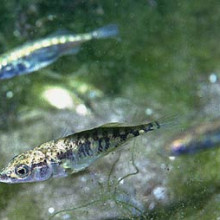
Fish choose leaders by Consensus
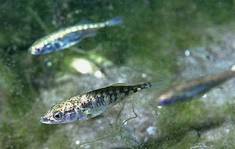 While the world headlines are still full of the news that the Americans have elected Barrack Obama as the first African-American president there is also news this week of how members of the fish world elect their leaders.
While the world headlines are still full of the news that the Americans have elected Barrack Obama as the first African-American president there is also news this week of how members of the fish world elect their leaders.
When it comes to deciding which leader to back, most of the time fish reach a consensus to go for the most attractive of two possible leaders. But like a stereotypical sheep following the flock, fish will also follow whatever choice most of the rest of their shoal take - whether it's the right choice or not.
This is a study from a team of researchers led by David Sumpter of Uppsala University in Sweden and Ashley Ward of Sydney University in Australia, which they published this week in the journal Current Biology.
They conducted experiments in aquarium tanks with little freshwater fish called three-spined sticklebacks. From previous studies the researchers knew that the fish had certain preferences for leaders; they tend to follow fish that are bigger and plumper, with fewer spots that could indicate they have a parasitic infection. In general they back the fitter more successful fish.
But what the researchers wanted to know was whether a shoal of fish comes to a group decision on which leader to back by consensus, in other words, do they make decisions that reflect the general opinion of the group?
A similar thing happens when people are asked to sit on a jury in court. It was an 18th century French Philosopher, Condorcet, who showed that as the size of a jury increases so does the chance that the group will correctly decide if the defendant is guilty or not. And it seems a similar thing does indeed happen with fish.
Sumpter and Ward made replica fish that had different levels of fishy attractiveness: some were bigger and fatter, some small, skinny and spotty - and displayed various pairs of possible leader fish to groups of sticklebacks. And quite simply, the groups checked out the two possible leaders and swam towards the one they chose.
The researchers saw that as the size of the shoal increased, the fish got better at accurately choosing the better leader, which is the one that is bigger, better fed and free from infections.
While the consensus of the group was accurate most of the time, occasionally the shoal of fish would slip up and make the wrong decision, swimming towards the less attractive leader.
But who can blame the sticklebacks, since sometimes us humans make the same mistakes? Even if copying what the majority of other people around us are doing isn't always the right thing to do, on the whole it tends to be a good strategy.
Why does beer seem to go flat after eating salty food?
Chris - It's all down to something called nucleation and that is that the salt in the drink, the little crystals, if you've got some of those stuck on your lips or still in your mouth the salt forms a rough surface for the beer bubbles (the carbon dioxide that makes beer fizzy) to form on. It's much easier to form where there's a little imperfection. The beer fizzes out and all the carbon dioxide gets released where the salt crystals are and that makes the beer go flat. You can demonstrate this for yourself if you take a bit of beer and pour some salt into the beer it should froth up. That's the CO2 coming out.
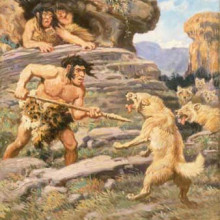
22:10 - When did we start hunting?
When did we start hunting?
with Preston Miracle
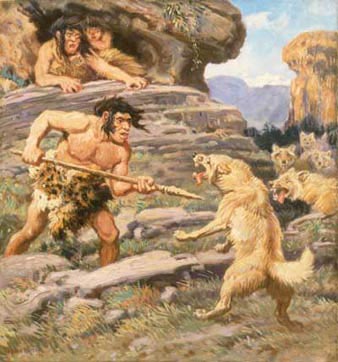 Helen - What sort of thing can we learn from the remains of animal bones that are left behind? What can it tell us about what people ate?
Helen - What sort of thing can we learn from the remains of animal bones that are left behind? What can it tell us about what people ate?
Preston - Well, the first trick of course is to sort out what animal it is the bones were coming from. For that we've got various kinds of comparative collections. So you can compare the old with the new and sort out the species, the age of animal perhaps, which part of it was preserved and the like. Moving on from that as a zooarchaeologist - an archaeologist studying these zoological remains - it's really looking at the patterns of modification from butchery or damage from hunting and cooking that you might have but also looking at the other animals that might have been using and collecting these animals and trying to unravel from say, ice age caves, which animals and which people would have been using these animals and bringing them to the site.
Helen - Are these animals still alive today or are they long-gone and extinct? Would we be quite surprised to see them strolling around our countryside today?
Preston - The farther back you go in time the more extinct animals you have. A lot of my work recently has been looking at remains about 130,000 years ago at the time of the last interglacial period: the last warm period much like our own. In these cases from the site in northern Croatia, the site of Krapina, there are very large woodland rhinos that have long been extinct that these Neanderthals were hunting as well as large bison, cave bears, beavers and a whole suite of different animal remains that were coming into these sites.
Helen - I know it's quite controversial and there are people arguing maybe both ways but how do you feel about how much those ancestral people were contributing to the demise of those species that are no longer with us?
Preston - Well it's very difficult to find direct evidence of just what happened to neanderthals and for that particular issue we're perhaps talking about something that happened about 30,000 years ago. It's much later in time than the particular set I'm talking about. My guess is that there is a fair amount of out competition by these new peoples. I think we can see from the ways in which the Neanderthals were managing the food and the ways in which they were hunting - they were extremely competent hunters - certainly in terms of their kinds of adaptations to the environment they were in very many ways successful in these ice age environments.
Helen - So looking at the hunting now, how can we reconstruct in this archaeological record that tells us about how our own ancestors went out hunting and what they actually used, the techniques they used?
Preston - One question that one faces is were they hunting these animals as opposed to just picking up dead carcasses and scavenging them. There's several lines of evidence one can look at. One is to look at what age of animal they were taking. Are they producing a structure of say very young and relatively old animals which is what you'd expect to be finding on the landscape itself if you were scavenging. We can see again from not just the site of Krapina but at many of these Neanderthal sites that they were actually targeting animals in their prime of life. It's a very good sign that somebody was actively taking these animals rather than just collecting the carcasses. When you get to the animals themselves, if you look at their pattern of were they taking meatier parts of the carcass, were they processing these meaty remains? It's a very good indication that you have some kind of hunting as opposed to scavenging going on.
Helen - What kind of tools were they using?
Preston - What we have preserved is for the most part the stone tools. Some of these would have been serving as some kind of points on thrust spears, various tools for cutting the hide and cutting up the meat. Many of these tools were most certainly used for making wooden tools and unfortunately we very rarely have wooden tools preserved.
Helen - Were they good at butchering? Had they figured out all that time ago how to deal with these animals? Do we have any evidence of skilled stonework?
Preston - I think quite clearly. You can see that they were making detailed use of the animal's anatomy to cut these rhino carcasses up into these small packets for transport. There's a pattern of burning on the bones. You get burning on the very ends of them, for example. This suggests they might have been roasted on the open fire. I think they were very competent in terms of their manipulation of these carcasses.
Helen - So they did cook the food. I think we're talking about that later on in the show. Whether or not we actually have to cook our food. Do we generally find that cooking the meat was something that's been around for a very long time?
Preston - I would think so. The evidence is fairly ephemeral for these time periods. Cooking is one of the real frontiers, I think, that we still are approaching and trying to get a better understanding of. Again, patterns of this kind of burning on the bones to me is very suggestive of some kind of roasting and cooking.
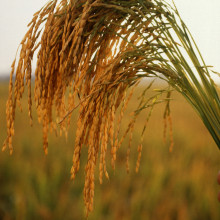
28:40 - Crop Origins
Crop Origins
with Martin Jones
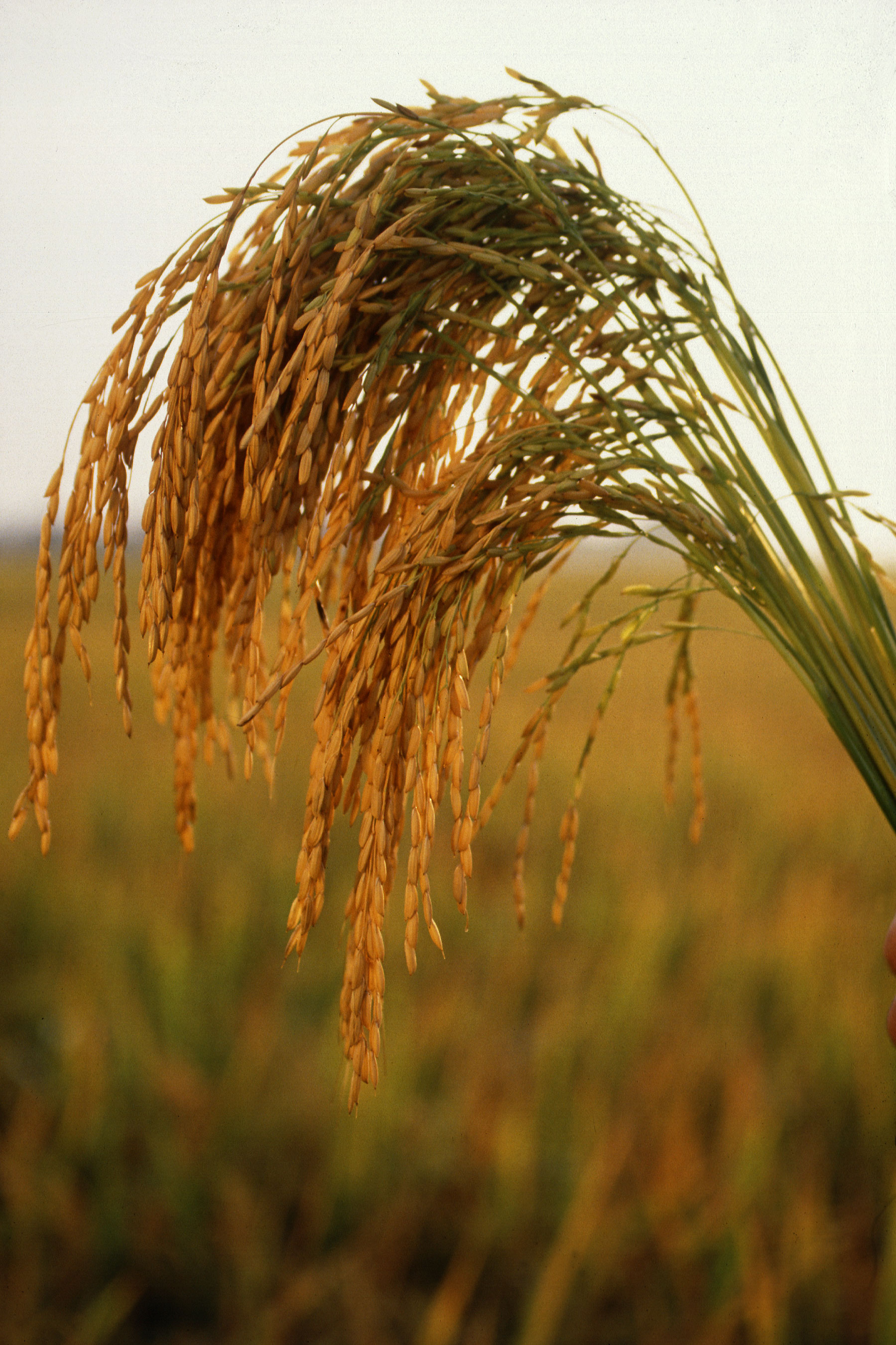 Chris - One of the other things that is very important to food is plant sources and one of the things that we see commonplace today in the domesticated crops we grow them in fields, we harvest them and we eat them. Was that always the case? Martin Jones is also with us from Cambridge University. Welcome Martin. What about when people began to first domesticate plants?
Chris - One of the other things that is very important to food is plant sources and one of the things that we see commonplace today in the domesticated crops we grow them in fields, we harvest them and we eat them. Was that always the case? Martin Jones is also with us from Cambridge University. Welcome Martin. What about when people began to first domesticate plants?
Martin - We've been eating grass seeds, and let's remember we've been eating them for at least 25,000 years.
Chris - How do you know that?
Martin - There are some sites, for example a site on the sea of Galilee, which captured the remains of wild barley seeds along with a whole range of other things: of fish, birds and other things they ate. They were found on the fire and in addition that site on the sea of Galilee had grinding stones. In the cracks of the stones were small bits of silica. Under a microscope we can identify them as coming from grass seeds.
Chris - So our history with plants goes back a long time. We've got that documented but it's a bit different to just go gathering plants than to just grow them for the purpose of eating them or using them. When do we think that happened?
Martin - We can see that something big happened to the form of the plants around 10,000 years ago. Between 9 and 10 thousand years ago in different parts of the world: in southwest asia but also in parts of china you can see plants changing their form. They're changing their form in such as way as they need the farmer to sew them. That's the threshold that we think of as domestication when the plant can no-longer survive in the wild. It's become dependent on the farmer to sew it.
Chris - This would have been because people were selecting breeds of plants that would give them very good yields but obviously the payback for the plant was it needed to be nurtured.
Martin - Well you can see it that way. Also it's the plant evolving so the plant is, in a sense, going for an option that's good for the plant. It's the plant evolving rather than the humans and what we can see is there's enough human predators doing certain things for the plant to switch that way. I think we're thinking of these evolutionary processes as two-sided. Both the humans and the plants are evolving together.
Chris - That would put the first farmers around 10,000 years ago. What sorts of crops were they growing?
Martin - They'd have grown crops that were slightly familiar to us. They'd have grown wheat and barley. They wouldn't be the same wheat as we have in our bread today. In fact the types of wheat, the species of wheat that they were growing are now quite rare. They have names like einkorn and emmer. There are just very few places, normally hilly places, where crop salesmen don't get to in Europe and Africa where you can find them still growing. In China they would be rice and millet. Millet we're most familiar with as birdseed but in fact a lot of people still eat millet in North China.
Chris - If you look at the genetic history of the plant what can the DNA in the plants tell you about these various transitions? How would you go about interrogating the plants genetics to find out when these transitions happened?
Martin - What we're finding the answer to that question sis changing every year. Genetics is changing so fast and what we know now is that the DNA in the plant has a massive amount of historical information about what's happened to it. That comes in two forms. On the one hand there's a lot of DNA that doesn't seem to be doing much except slowly evolving and that acts rather like the tachometer in a lorry. It traces a record of the journey the crop's taken through time. Some DNA you can treat as a marker of the journey and you can trace back the family tree of the plant and where it's spread to and where it's started from. Also the DNA that's making the bits of the plant we're beginning to realise that can tell us a lot too. The reason is that as plant agriculture spreads around the world it spreads into different environments and those genes do accordingly.
Chris - When people moved they presumably - if they had a good yielding crop they'd have taken some of it with them. So that can tell you not just where the plants went but where the people went.
Martin - In fact, now because genetics has affected every branch of archaeology you can have a group of different geneticists. You can have one looking at the human genes and forming maps and journeys of spread. You can have another geneticist looking at the crop genes and doing a map of the spread there. You can have a third set of geneticists looking at the disease genes. They're all tracking the same pathways which are the pathways of our human past.
Chris - What does this tell us about the way that humans got around the earth? What impact do the changes you see in the plants have on what we understand about early human civilisations and people getting together in communities?
Martin - One thing to bear in mind is that humans were getting round the earth before domestication happened and so on the one hand you can see humans going to the northerly latitudes way before agriculture. By 30-40,000 years ago there are humans in the Arctic Circle and that does say something about how they were interacting with animals and plants. You can see also farmers getting into the Arctic Circle. For example, we've done some work with barley and that has shown a similar picture.
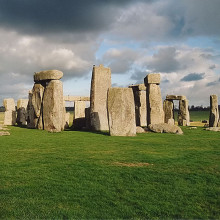
35:00 - Strontium Isotopes and Bones
Strontium Isotopes and Bones
with Jane Evans
 Jane - What we've done is use strontium isotopes which can trace the effect of soil composition on your diet to look at ancient migration patterns in humans and animals.
Jane - What we've done is use strontium isotopes which can trace the effect of soil composition on your diet to look at ancient migration patterns in humans and animals.
Ben - Why is it that you can use strontium and the different isotopes available to actually find out where things have come from?
Jane - Strontium basically comes from the rocks. From the rocks it gets into the plants and into the food chain. The advantage of strontium is that it's basically linked to the age of the underlying rocks. In Britain we have a huge diversity of rocks of different ages and these all tend to give a different strontium isotope signal to the overlying biosphere. We can pick this up and make use of it.
Ben - Specifically you've been using strontium isotope analysis for archaeological purposes. Whereabouts were you based?
Jane - Well we've done a lot of the work in and around Stonehenge and one of the great advantages of the Stonehenge area is it's based on chalk: the chalky downs. The chalk has a very distinctive isotope signature. It gives us a chance to be quite clear as to who and what has been raised on the chalk and who that we found buried in the chalk had to have come from somewhere else.
Ben - What have you been able to see?
Jane - Right, well. In looking at human beings that have been buried at Stonehenge we've found, for instance that Bronze Age Boscombe bowmen who are in a grave near Stonehenge have clearly come from an area that's well away from Stonehenge and they all move during their childhood. We've got the first definitive evidence of human migration from the human remains as opposed to extrapolating this from the artefacts that people find in the graves.
Ben - Strontium isotope analysis is so powerful that you can actually plot how people have moved throughout the course of their life.
Jane - Throughout their childhood one of the restrictions for humans - not perhaps for animals - is that their teeth form in childhood. Since it's the tooth enamel that we use we are restricted to looking at where people were during their childhood. That in its own right can be quite interesting.
Ben - Can you do the same sort of thing?
Jane - With animals their teeth form in a slightly different way and, particularly with grazing animals their teeth are forming through to the animal's maturity. You can actually track the history of the animals grazing into a later period of its life relative to a human. Some of these animals that we've looked at do appear to have grazed in areas quite distant from the chalk where their remains are found.
Ben - What do you think this says about the area where their remains were found? Was there something special that attracted people and their animals?
Jane - I think there are a number of things. I think the interesting thing about the animals first is they're not all local. First we can immediately say we're not dealing with small local feast. Neither are we dealing with a place where people come from far away but animals and meat are supplied by local suppliers. We're looking at a local situation where people are bringing animals from quite distant places and quite disparate places to this site. By that very observation it appears of significance and importance. Durrington Walls itself is a huge site. It must be that it has some meaning for these people. These people from different parts of Britain are communicating and contacting each other and drawn by the same set of principles and desires to come to this place.
Ben - So a technique of geological origin by looking at the strontium isotopes and rocks. Also not only to use those as an extra tool for archaeology but also to learn something about our social history.
Jane - Yes. I find that the very attractive side of this. You can go from a bunch of bones to Neolithic communication.
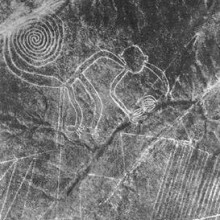
Nazca deforestation
with David Beresford-Jones
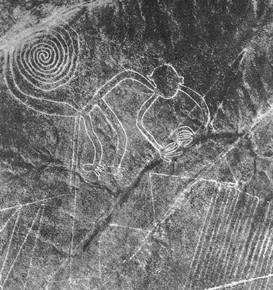 David - Nazca was a culture which existed on the south coast of Peru. That's in the valleys of Nazca and Ica from round about the time of Christ through to about 500AD. It's famous now because of the Nazca lines which thousands of tourists go to every year and fly over which are giant geoglyphs etched on the surface of the desert pampa which can be seen from the air and give rise to all sorts of extraordinary theories about aliens etcetera ,etcetera. The people who actually produced those lines or most of them were the Nazca people who are the main subject of my interest.
David - Nazca was a culture which existed on the south coast of Peru. That's in the valleys of Nazca and Ica from round about the time of Christ through to about 500AD. It's famous now because of the Nazca lines which thousands of tourists go to every year and fly over which are giant geoglyphs etched on the surface of the desert pampa which can be seen from the air and give rise to all sorts of extraordinary theories about aliens etcetera ,etcetera. The people who actually produced those lines or most of them were the Nazca people who are the main subject of my interest.
Diana - What does the area look like today?
David - It's the top end of the Atacama desert. It's one of the oldest and driest desert of the world. It never rains there. The only sources of water are the rivers which flow down off the Andes and then into the Pacific. The oases along those rivers were where people lived and these cultures flourished.
Diana - What happened to Nazca culture? Why had they disappeared from the archaeological record by 800AD?
David - Nazca culture - classic Nazca if you like - we know about through a very beautiful art form which is expressed through their textiles and through their ceramics. It's an art form which paints a picture of the natural world and all those fertility factors which underlie agricultural production. That sort of rather conservative artistic canon, if you like, suddenly fractures into three completely different art styles which include themes of war, warriors, depictions of head-hunting. Around the end of the classic Nazca period there are fewer habitation sites and there's also evidence from human skeletons that human life expectancy was falling and mortality was rising. This all adds up to a picture of some major social change going on around about that time.
Diana - How did archaeologists explain this before?
David - The old explanation is an explanation which is generally applied to all culture change in the Andes is that it's caused by an El Nino event. The amount of rain which is deposited on the mountains from the Pacific ocean goes up a huge amount and the rivers flood dramatically. My problem with it is it rather paints a picture of cultures sitting there on the coast of Peru and every now and again being impacted by these big climatic events over which they have no control. Which isn't very satisfying from a point of view form what we know about human cultures around the world.
Diana - What part does the huarango tree have to play in all this?
David - The huarango is a tree from the genus of prosopis and it's the dominant tree species on the coats of Peru. What I argue in my work is that its importance, although we can appreciate its importance quite easily as a human resource, its importance goes far beyond that. It is actually a keystone species in this particular, called riparian, in other words these oases along the rivers. Because it's leguminous it fixes nitrogen into the soil which improves soil quality through that and through a bunch of other effects. It has effects on soil moisture. It creates a microclimate and modifies all these extremes of desert environment to make it a more pleasant place for humans and indeed for other plants and animals.
Diana - So if this tree was pretty essential in maintaining the soil does that mean that Nazca culture went through such a dramatic change because they chopped too many down?
David - That copping down of the trees - a gradual process of human-induced change then exposed the landscape to these El Nino events. The El Nino events in the absence of this gradual change were not the great catastrophes at all. They were times when the water table was replenished and they were probably years of abundance. The reason people were chopping down this tree is of course increased agriculture - in order to clear woodland in order to have larger fields. The landscape essentially was unable to support that level of agricultural production after a certain point in time.
Diana - What lines of data did you have to follow to prove this?
David - First of all and rather obviously there are a whole bunch of relic tree trunks scattered across the landscape which is now completely empty of any vegetation whatsoever. We can record the positions of those tree trunks and therefore record where woodland used to be, where it isn't any more. Secondly we can look at middens. Those are rubbish dumps where people have been disposing of their rubbish in the ancient past to see what they were eating and that can give us a proxy indicator for changed ecological conditions. We can look at pollen. What we can see in those pollen records is a lot of huarango pollen at the bottom of the sequence - in other words going down in time - and then as you go up the sequence, forward in time a gradual falling away of the huarango and indeed of the other trees that make up the riparian woodland: acacia etcetera and agriculture signals appearing in that pollen record. Until we get up to the top of it where we've got a signal which is completely dominated by chenopods and amaranths. Those are weeds effectively: weedy species which grow in agricultural fields and are very tolerant of saline conditions. That's the sort of we get at the top right before we eventually convert into a landscape as it is today which has really, as I say, got no vegetation in it at all.

45:57 - Are we the only animals to cook our food?
Are we the only animals to cook our food?
We put this to Robert Foley, Professor of Human Evolution at the Leverhulme Centre for Human Evolutionary Studies, Cambridge...
Cooking is certainly unique to humans. There's no other species that does it. There's obvious reasons for that, because we're the only ones that can make fire, which is a pre-requisite.
In a way, fire comes first and cooking becomes a process after it. It's becoming clear that, really, cooking provides quite a number of advantages.
Richard Wrangham, from Harvard, has been doing a lot of experiments looking at how cooking can change the nutritional value of food. What it seems is that the process of warming food up - in a sense denaturing it - has a number of effects. One is that food is much more tender. That we know. If you eat a cooked carrot instead of a raw carrot, it's much easier. We can spend less time chewing, we can swallow it faster and we can digest it faster. It seems that it's an extension of things we see in other animals. Animals who use techniques, often in their stomachs, to tenderise food seem to try and make it more easily absorbable.
If we turn to the other question of when all this happened, the real question is when do we first find evidence of fire? That seems to be about half a million years ago or so. We don't find direct evidence of cooking then but we do see over the next 100,000 years or so the beginnings of things like burnt stone, which suggests that meat is cooked. It's probably goes quite a long way back in our evolutionary history and some people would argue it's really a very major change in the way we are able to live and survive.
And Peter Lucas, Professor of Anthropology, George Washington University, USA, points out...
The second possible advantage for cooking is that it improves digestion. We've done a model study here particularly with Zhongquan Sui when she was here - she's now at the University of Perdue. She found that, yes, cooking does to a certain extent improve digestion. You only need cook something for a fraction of the time that you actually do in order for it to be digested properly. The cooking times that people adopt when they normally say "this is cooked" seem to reflect strong mechanical changes in the food. In other words, these are things that affect your perception of food texture and allow you actually to eat it very much easier, very much shorter eating times than you would do if they're raw. That I think I would give as the essential answer at the moment.
How does radio carbon dating work?
Preston - It works because you have carbon 14 which is a heavier form of carbon 12 formed in the upper atmosphere with the bombardment of the carbon by cosmic rays and other bits of radiation. We know how much of that is being formed today. Therefore by looking at the ratio of carbon 14 to the carbon 12 in anything that has taken carbon in: any plant or animal that was living in the past you can measure the level of the carbon 14 that's left. That way you can infer how long it has been dead since that carbon 14 has decayed. Chris - Because it stops taking the radioactive form in the minute it dies. Therefore the radioactive carbon in it must decline after death and therefore working out how much is in there tells you how it died: how long ago. Because we know how long the carbon takes to disappear. Preston - Exactly

How did early civilisations learn the language of their neighbours?
Martin - One thing we know is that as farmers spread probably languages spread with them. You can do a family tree of languages and a family tree of genes. There's a reasonable match but we also know that there was contact between hunter gatherers and farmers and so there would have been an interaction with people with very different languages. I guess we must just assume that their body languages were sending the right messages.
Chris - And also their tummy telling them they're hungry so they'd be willing to swap food and things.
Martin - That's right and I think there are more multilingual communities now than in the English speaking world we imagine there were.
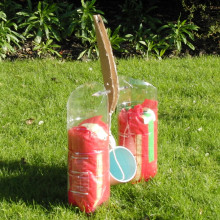









Comments
Add a comment